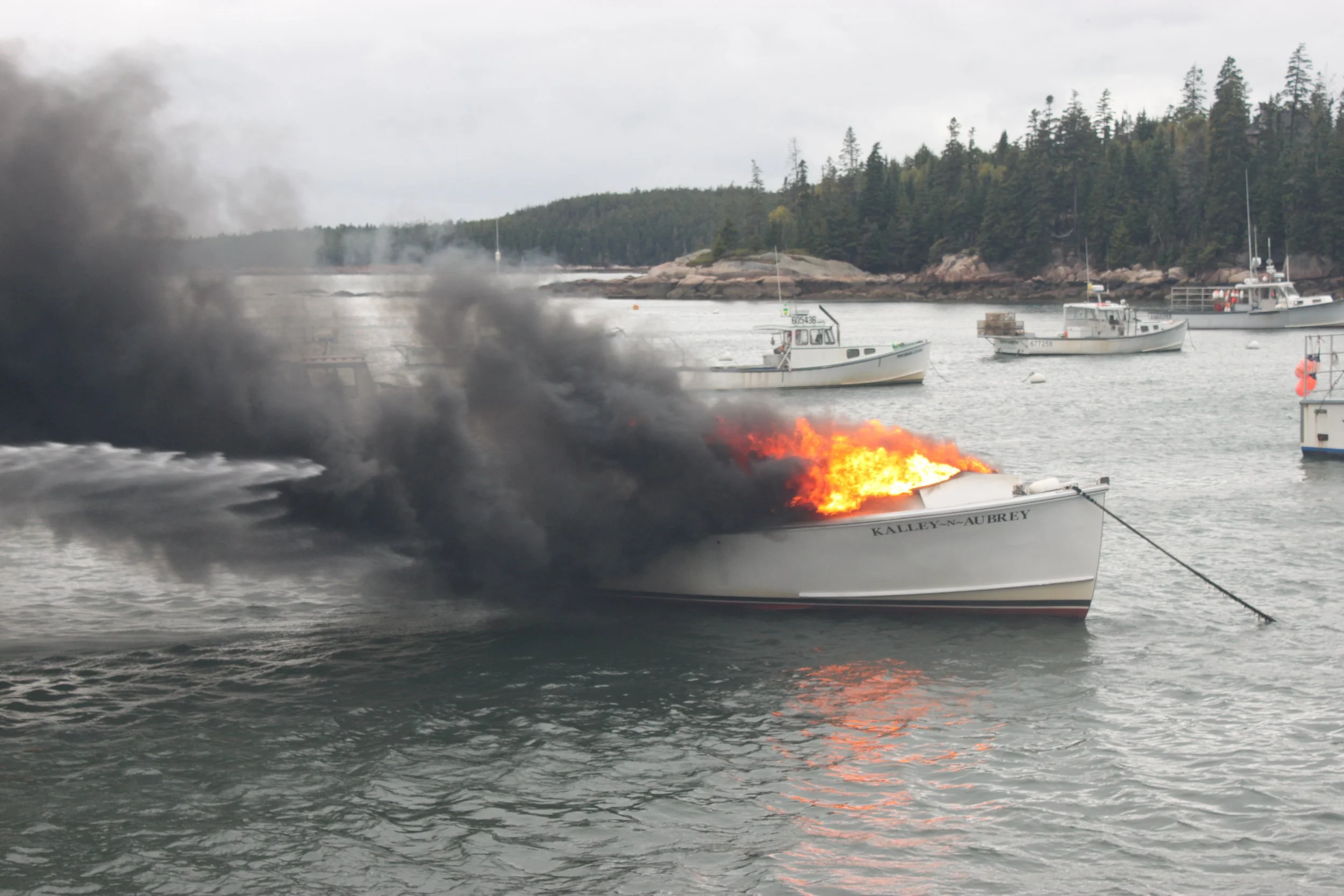Stonington and Deer Isle crews fight blaze on lobster boat
Fire crews adapted to a challenging situation on the water, chiefs say
Fire crews worked to keep the Kalley-n-Aubrey from getting close to a busy dock used by fishermen. Contributed photo.
By Tricia Thomas
STONINGTON—Firefighters from both Deer Isle and Stonington responded to a burning lobster boat moored in Burnt Cove off of Fifield Point Road on Wednesday. A cause of the blaze, which engulfed the boat’s pilot house and heavily damaged the rest of it, has not yet been determined. No injuries were reported.
Deer Isle Fire Chief Brent Morey, who served as incident commander at the scene, said crews from both towns were called out at about 2:50 p.m. The Sedgwick Fire Department, with which the departments routinely share calls as a trio, was available on a standby basis, Morey said.
When they arrived at the scene, located near the Fifield Lobster Company, the boat’s pilot house was engulfed in flames.
After determining that winds were thwarting efforts to fight the fire from land, crews used skiffs to reach the Kalley-n-Aubrey, taking hoses with them. Once they were able to secure the boat to keep it from moving or breaking free from its mooring, they were able to contain the fire in about a half-hour. Crews then spent another half-hour, while the tide was waning, hauling the boat back to shore and making sure the fire was completely extinguished, Morey said.
“When we first got there, it was so hot that we really couldn’t get close enough to it to tie onto it. But, we were eventually able to do that. We managed to get [the fire] down enough so that we could get ahold of the boat and put the water to it, which worked pretty well,” Morey said.
Morey did not know who reported the fire, but said that it broke out near a busy dock used by local fishermen. The owner of the boat, Ronald Alley of Little Deer Isle, was not on board at the time of the fire. He was contacted and arrived at the scene later, Morey said.
Morey and Stonington Fire Chief Steve Rittmeyer said that, while boat fires are rare, they pose unique challenges.
“It’s a boat. It’s in the water. It moves. So, when you’re using a nozzle with the type of water pressure or water flows that we use, and you start to put the water on the boat, the boat moves. You’re chasing it all around, trying to get in it, trying to get around it. It’s not easy,” Morey said.
Rittmeyer, who was not present at the scene but was debriefed on the incident, agreed.
“With a boat fire, the boat is out on a mooring, so how do you get water to it? You can’t drive a truck out there,” Rittmeyer said. “And, obviously, because it’s on a boat, the fire is in motion. With a structure fire, the house stays where it is. With a boat fire, you’re worried about the fire burning through the mooring pendant and drifting near the dock, setting that on fire, or drifting into other boats, setting those on fire. That’s the challenge.”
“These aren’t ‘template’ kinds of things, or ‘textbook’ problems we’re solving,” Rittmeyer added. “A lot of the time, you just have to go there and adapt.”


